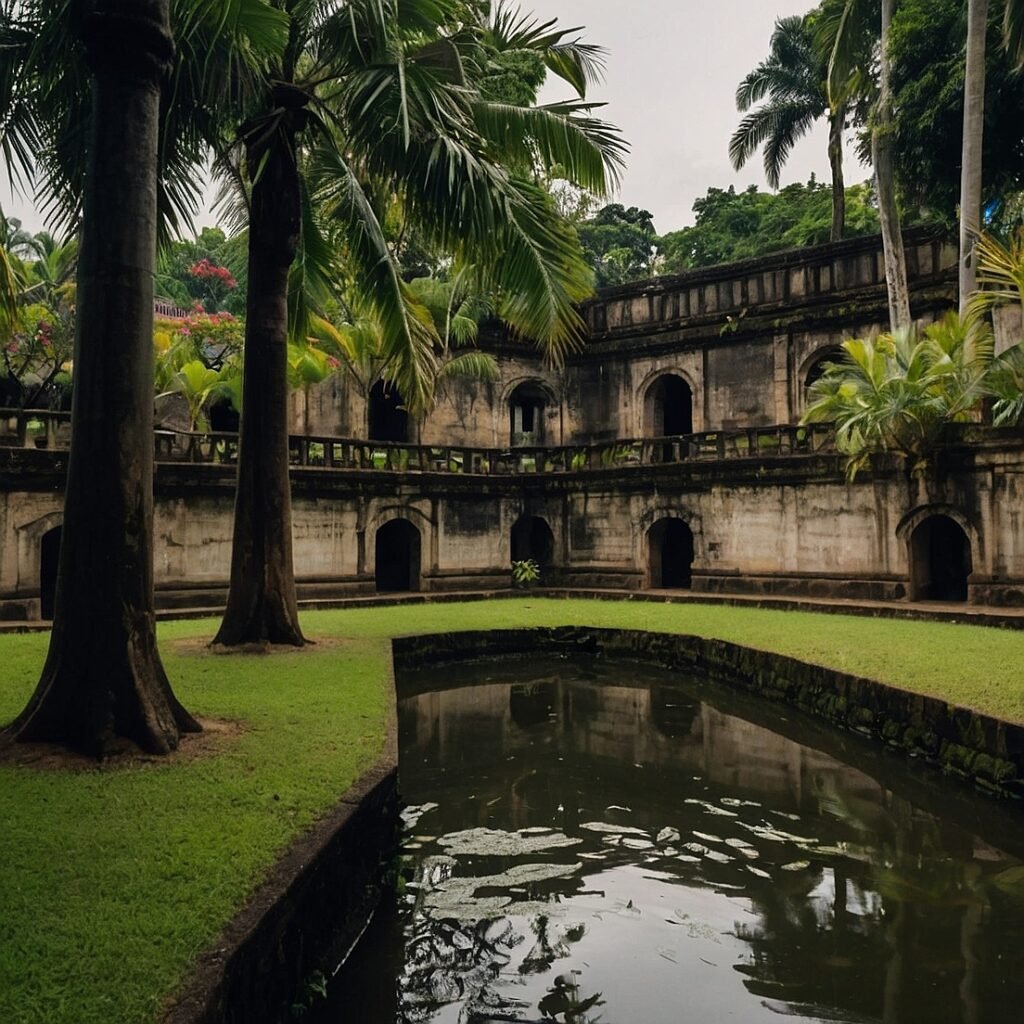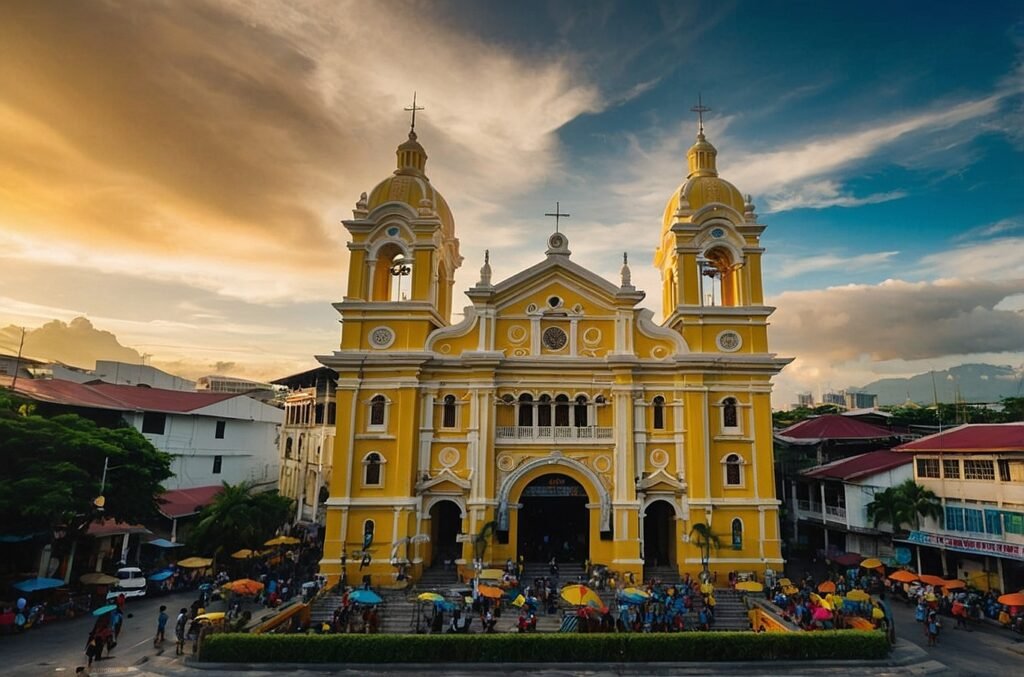Fort Santiago, an iconic citadel first built by Spanish conquistador Miguel López de Legazpi, stands as a testament to the rich history and cultural heritage of the Philippines. Located at the mouth of the Pasig River in Manila, this fortress has witnessed centuries of turbulent events and played a pivotal role in the country’s past. From its inception as a wooden fort in 1571 to its current status as a national shrine, Fort Santiago has evolved into a significant historical landmark and tourist destination. This blog post delves into the fortress’s fascinating history, architectural features, and cultural significance, offering readers a comprehensive understanding of this enduring symbol of Philippine resilience and national identity.
Historical Background
Origins and Early Development
The story of Fort Santiago begins with the arrival of Spanish colonizers in the Philippines. In 1571, Miguel López de Legazpi, recognizing the strategic importance of the area where the Pasig River meets Manila Bay, ordered the construction of a wooden fort. This initial structure was built on the site of a palisaded fort belonging to Rajah Sulayman, the Muslim ruler of pre-colonial Manila. The Spanish saw the potential of this location for defending their newly established colony and controlling maritime trade.
Over the following decades, the wooden fort underwent significant transformations. Stone fortifications gradually replaced the original wooden structures, enhancing the fort’s defensive capabilities. The construction process was laborious and time-consuming, often relying on forced labor from the local population. By the early 17th century, Fort Santiago had evolved into a formidable stone citadel, serving as the primary defense of Intramuros, the walled city of Manila.
Role in Colonial Administration
Fort Santiago quickly became the center of Spanish military power in the Philippines. It housed the colonial administration and served as the headquarters for various Spanish governors-general. The fortress played a crucial role in protecting Spanish interests in the region, defending against potential invasions and local uprisings. Its strategic location allowed the Spanish to monitor maritime traffic entering and leaving Manila Bay, crucial for maintaining control over trade and communication with other parts of the Spanish Empire.
Throughout the Spanish colonial period, Fort Santiago witnessed numerous historical events and housed many significant figures. It served as a prison for political dissidents and revolutionaries, including Dr. José Rizal, the Philippine national hero, who was imprisoned here before his execution in 1896. The fort’s dungeons gained notoriety for their harsh conditions and the suffering endured by prisoners.
World War II and Reconstruction
The fortress’s role evolved dramatically during World War II. When Japanese forces occupied Manila in 1942, they used Fort Santiago as a prison and torture chamber for suspected guerrillas and American POWs. The site became synonymous with the brutality of the occupation, with thousands of Filipinos suffering and perishing within its walls.
During the Battle of Manila in 1945, Fort Santiago sustained heavy damage from both Japanese defenders and American liberators. Many historical artifacts and structures were destroyed or damaged in the intense fighting. In the aftermath of the war, efforts to restore and preserve the fort began, recognizing its historical significance and potential as a cultural landmark.
Architectural Features
Layout and Design
Fort Santiago’s architecture reflects its long history and multiple renovations over the centuries. The fortress follows a triangular plan, with its base facing the Pasig River and its apex pointing inland. This design maximized its defensive capabilities, allowing for better control of river traffic while maintaining a strong position against land-based attacks.
Key architectural elements of Fort Santiago include:
- Thick stone walls: Massive stone walls, several meters thick in places, form the primary defensive structure of the fort.
- Bastions: Angular projections at the corners of the fort provided strategic positions for artillery and enhanced overall defense.
- Moat: A wide, deep moat surrounds the fort, adding an extra layer of protection against potential attackers.
- Main gate: The imposing main entrance features intricate stone carvings and the coat of arms of Spain.
- Barracks and administrative buildings: Within the fort, various structures housed troops, stored supplies, and served administrative functions.
Plaza de Armas
At the heart of Fort Santiago lies the Plaza de Armas, a large open space that served multiple purposes throughout history. This central plaza was used for military drills, gatherings, and ceremonial events. Today, it serves as a focal point for visitors, offering a space for reflection and providing access to various exhibits and restored buildings within the fort.
Rizal Shrine
One of the most significant features of modern Fort Santiago is the Rizal Shrine. This museum, dedicated to the life and works of Dr. José Rizal, is housed in a reconstructed barracks building where Rizal spent his final days before execution. The shrine contains a wealth of artifacts, documents, and interactive exhibits that chronicle Rizal’s life, his impact on Philippine history, and his lasting legacy.
Cultural Significance
National Shrine Status
In recognition of its historical importance and cultural value, Fort Santiago was declared a Shrine of Freedom in 1950 by President Elpidio Quirino. This designation acknowledges the fort’s role in the Philippine struggle for independence and its significance as a symbol of national identity. The site’s elevation to national shrine status has ensured its preservation and continued relevance in Philippine culture and education.
Educational and Tourism Value
Fort Santiago has become a crucial educational resource, offering visitors and students alike an immersive experience in Philippine history. The site hosts various exhibits, guided tours, and educational programs that cover topics ranging from pre-colonial Philippine society to the Spanish colonial era, the Philippine Revolution, and World War II.
The fortress attracts hundreds of thousands of visitors annually, contributing significantly to Manila’s tourism industry. Its well-preserved structures, beautiful gardens, and compelling historical narratives make it a must-visit destination for both local and international tourists interested in Philippine history and culture.
Symbol of Resilience
Beyond its historical and educational value, Fort Santiago has come to symbolize the resilience and enduring spirit of the Philippine people. Having withstood centuries of conflict, natural disasters, and changing political tides, the fortress stands as a testament to the nation’s ability to overcome adversity and preserve its rich cultural heritage.
Preservation and Restoration Efforts
Challenges in Conservation
Preserving a centuries-old structure like Fort Santiago presents numerous challenges. The fortress faces threats from natural elements, urban development pressures, and the wear and tear caused by thousands of visitors each year. Some of the key conservation challenges include:
- Structural integrity maintenance
- Protection against environmental factors (e.g., humidity, pollution)
- Balancing authenticity with accessibility and safety requirements
- Funding for ongoing restoration and maintenance projects
Recent Restoration Projects
In recent years, several significant restoration projects have been undertaken to ensure Fort Santiago’s preservation for future generations. These efforts have focused on both structural reinforcement and enhancing the visitor experience. Some notable projects include:
| Year | Project | Description |
|---|---|---|
| 2012 | Moat Restoration | Cleaning and restoration of the fort’s moat system |
| 2014 | Baluarte de Santa Barbara | Reconstruction of damaged sections and installation of period-appropriate cannons |
| 2017 | Dungeons Restoration | Stabilization and partial reconstruction of the fort’s infamous dungeons |
| 2019 | Plaza de Armas Renovation | Landscaping and installation of new interpretive signage |
These restoration efforts have not only helped to preserve the physical structure of Fort Santiago but have also improved its ability to tell the complex story of Philippine history to visitors.
Fort Santiago in Modern Times
Cultural Events and Activities
Today, Fort Santiago serves as more than just a historical site; it has become a vibrant cultural center hosting various events throughout the year. Some of the regular activities and events held at the fort include:
- Historical reenactments
- Art exhibitions
- Cultural performances
- Educational workshops
- Film screenings
These events help to keep the site relevant and engaging for both local communities and tourists, ensuring that Fort Santiago remains an active part of Manila’s cultural landscape.
Research and Archaeology
Fort Santiago continues to be a site of active historical and archaeological research. Ongoing studies and excavations provide new insights into the fort’s history and the lives of those who inhabited it over the centuries. Recent archaeological work has uncovered artifacts from various periods, including:
- Pre-colonial indigenous artifacts
- Spanish colonial-era pottery and weaponry
- World War II-era relics
These findings contribute to our understanding of Philippine history and help to refine the narratives presented at the site.
Virtual Tours and Digital Preservation
In response to global trends and the challenges posed by the COVID-19 pandemic, Fort Santiago has embraced digital technologies to enhance accessibility and preservation efforts. Virtual tours and 3D modeling projects have been initiated to:
- Allow remote access to the site for those unable to visit in person
- Create detailed digital records for conservation purposes
- Enhance educational outreach through interactive online exhibits
These digital initiatives ensure that Fort Santiago’s historical and cultural significance can be appreciated by a global audience, transcending physical boundaries.
Environmental Sustainability
As a major tourist attraction and historical site, Fort Santiago has taken steps to implement environmentally sustainable practices. These efforts aim to minimize the ecological impact of tourism while preserving the site for future generations. Some key sustainability initiatives include:
- Installation of energy-efficient lighting systems
- Implementation of waste reduction and recycling programs
- Use of eco-friendly materials in restoration projects
- Development of green spaces within the fort complex
These measures not only contribute to environmental conservation but also enhance the overall visitor experience by creating a cleaner, more pleasant atmosphere within the historic site.
Economic Impact
Fort Santiago plays a significant role in Manila’s tourism economy. The site’s economic impact extends beyond direct revenue from ticket sales and includes benefits to local businesses, employment opportunities, and broader economic development in the surrounding area.
A breakdown of Fort Santiago’s economic contributions:
- Direct revenue: Ticket sales, guided tours, and on-site purchases
- Indirect revenue: Spending by visitors in nearby hotels, restaurants, and shops
- Employment: Jobs created for tour guides, maintenance staff, and administrative personnel
- Cultural industry support: Opportunities for local artisans and performers
The following table illustrates the estimated economic impact of Fort Santiago on Manila’s economy:
| Category | Annual Impact (in Philippine Pesos) |
|---|---|
| Direct Revenue | ₱50-60 million |
| Indirect Revenue | ₱150-200 million |
| Employment (number of jobs) | 200-250 |
| Cultural Industry Support | ₱10-15 million |
These figures underscore the importance of Fort Santiago not only as a historical landmark but also as a significant contributor to the local economy.
Future Prospects and Challenges
As Fort Santiago moves into the future, it faces both opportunities and challenges. The site must balance preservation with modernization, maintain relevance in a rapidly changing world, and address the impacts of climate change and urban development.
Opportunities:
- Expansion of digital offerings and virtual experiences
- Development of new educational programs and partnerships with schools and universities
- Integration of cutting-edge conservation technologies
- Enhanced collaboration with international heritage organizations
Challenges:
- Securing sustainable funding for long-term preservation
- Managing increasing visitor numbers without compromising the site’s integrity
- Adapting to the impacts of climate change, including sea-level rise and extreme weather events
- Balancing authenticity with the need for modern amenities and accessibility
Conclusion
Fort Santiago stands as a monumental testament to the Philippines’ rich and complex history. From its origins as a wooden fort in the 16th century to its current status as a national shrine and major tourist attraction, the fortress has witnessed and played a part in many of the most significant events in Philippine history. Its walls have withstood wars, natural disasters, and the passage of time, emerging as a powerful symbol of Filipino resilience and cultural identity.
As we look to the future, Fort Santiago’s role as a keeper of history and a bridge to the past becomes increasingly important. In a rapidly changing world, sites like Fort Santiago provide crucial links to our shared heritage, offering lessons from history that remain relevant today. The ongoing efforts to preserve, restore, and reimagine the fortress ensure that future generations will have the opportunity to walk in the footsteps of history, gaining insights into the events and people that shaped the Philippines.
Fort Santiago is more than just a tourist attraction or a relic of colonial times; it is a living monument that continues to evolve and contribute to the cultural, educational, and economic fabric of the Philippines. As it faces the challenges of the 21st century, Fort Santiago stands ready to adapt and endure, just as it has for centuries, remaining an enduring symbol of the Philippine spirit and a treasure of world heritage.
Disclaimer: While every effort has been made to ensure the accuracy of the information presented in this blog post, historical details and statistics may be subject to interpretation and ongoing research. Readers are encouraged to consult primary sources and official historical records for the most up-to-date and comprehensive information. If you notice any inaccuracies, please report them so we can correct them promptly.




